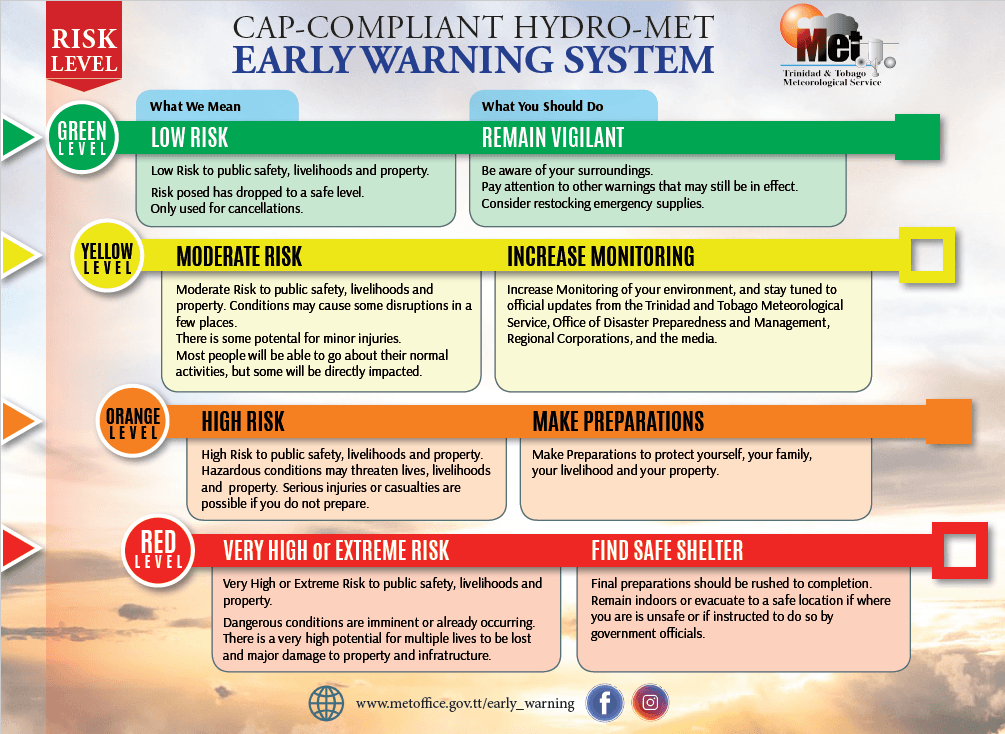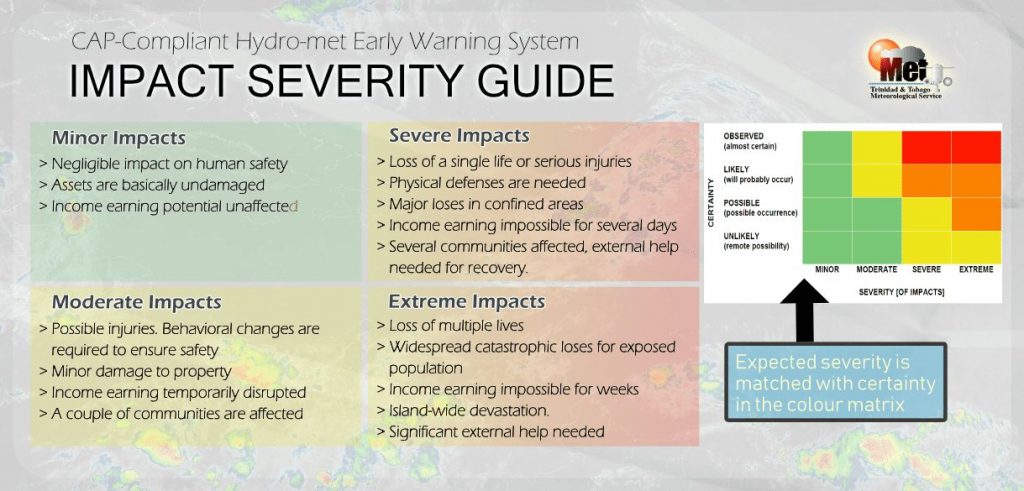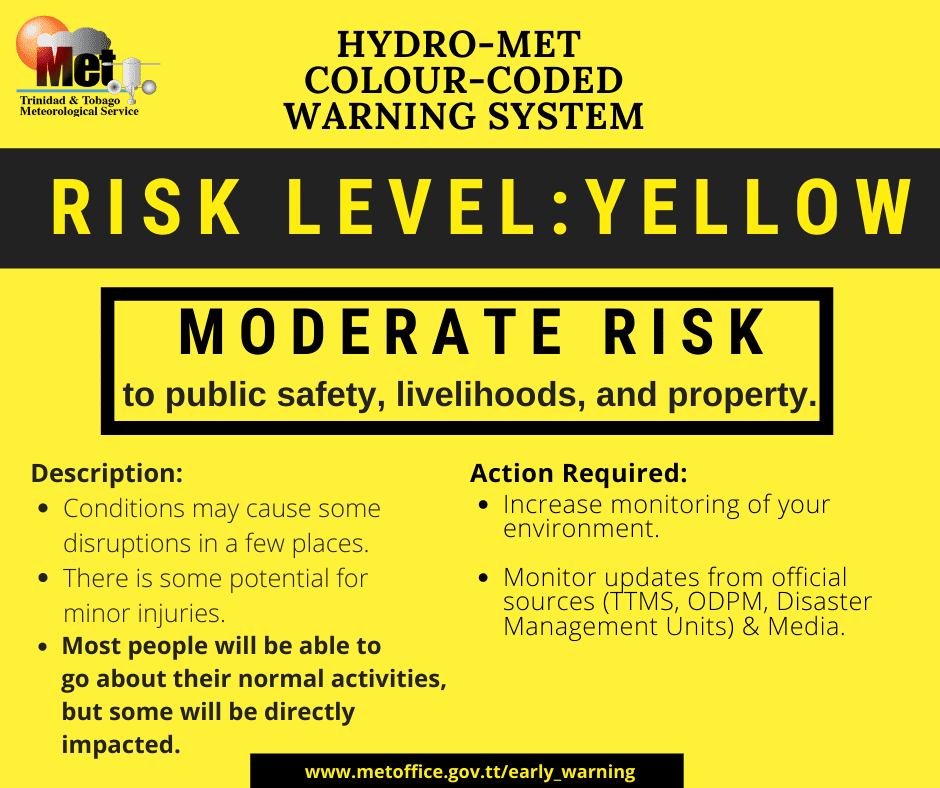A combination of long-period swells and spring tides will result in hazardous seas into the new year, prompting the Trinidad and Tobago Meteorological Service (TTMS) to issue a Hazardous Seas Alert for this short-lived event.
What you need to know
— What is happening: Long-period swells between 12 and 15 seconds are moving in from the northeast and are forecast to briefly affect northern and eastern coastlines, combining with spring tides ongoing through January 2nd.
— What can we expect: Open water waves are forecast to remain up to 2.0 meters, while swells and spring tides are forecast to produce occasional large, battering waves in nearshore areas through Thursday evening, according to the alert. However, forecast models show high-energy swells returning from Friday into next week. There is an increased risk of rip currents and potentially dangerous conditions for small craft operators.
Latest Alerts
TTMS Issues Adverse Weather Alert For T&T
TTMS Issues Adverse Weather Alert For T&T
Trinidad and Tobago is NOT under any tropical storm or hurricane threat, watch, or warning at this time.
The Hazardous Seas Alert
The Trinidad and Tobago Meteorological Service issued a Hazardous Seas Alert (Yellow Level) on Tuesday, December 31st, 2024, at 11:00 AM. The alert immediately went into effect for exposed northern and northeastern coastal areas of Trinidad and Tobago. It remains in effect through 4:00 PM Thursday, January 2nd, 2025.


“Northeasterly long period swells in combination with spring tides are expected to continue to agitate seas with exacerbated conditions especially at high tides. Larger than normal breakers are expected in the surf zone,” according to the Trinidad and Tobago Meteorological Service.

The alert’s color indicates the event’s severity and probability of the event occurring. Currently, the alert level is Yellow. This means that the hazards have been observed, and the severity of impacts is moderate for this particular alert.
There is an increased risk of strong rip currents, which pose a serious hazard to swimmers and beachgoers. Rip currents can be life-threatening even for experienced swimmers. Agitated seas will likely be particularly dangerous for offshore activities, including fishing and other small craft marine interests. Due to spring tides, conditions at seawalls along affected coastlines can be exacerbated, especially at high tide.
For a moderate Hazardous Seas Alert, there is the potential for possible injuries, where behavioral changes are required to ensure safety. There may be minor damage to property, with income-earning temporarily disrupted and a couple of communities affected.
The Met Office advises all marine interests are advised to exercise caution in any sea related activities, limit nearshore activities where possible and avoid swimming in agitated seas.












